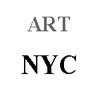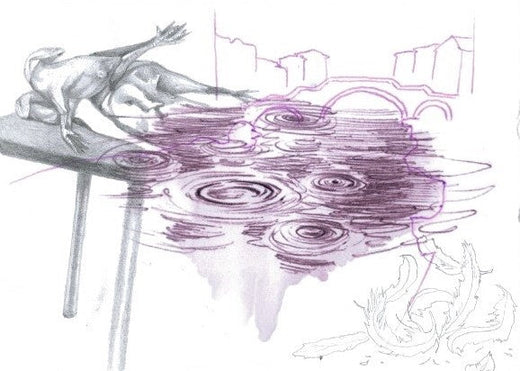This is a work on suffering that arises from suffering.
Anyone who suffers feels the need to give meaning to their pain because the only way to tolerate suffering is not to believe it is useless.
The project was born from the attempt to positively re-signify a negative experience.
I tried to leave
Installation site-specific, 52 pieces
101° Collettiva, Fondazione Bevilacqua La Masa, Venice
Ivan had moved to Venice. Ivan loved Venice.
One day, he locked himself in his room. “I want to leave this place,” he said.
And no one has ever seen him leave the room since then.
A long time later, an old box was found among his effects.
The box was full of postcards that had never been sent.



Sometimes, our choices betray us, and sometimes, it's the ones we don't make that turn against us. Other times, we deceive ourselves when we don't know what we really want.
Ivan represents all those stuck in unhappy situations - chosen or not - from which they cannot escape.
Building an alternative future means having creativity but also the means to make the necessary changes and the courage to implement them. Not everyone is lucky enough to own this magical triplet. Most of the time, we endure our lives with fatalism or learn strategies to live peacefully with our daily anxieties. We look for escapes or narratives to bear the weight of difficulties because we seem to have no alternatives.
Ivan's story is the story of those who can no longer bear the burden, not even that of their narratives.
Those who enter depression enter a reserved, intimate space, away from shared places and away from others. It's like staying locked in your room while everyone else plays in the garden.
Like Ivan, I remained locked in my room for a long time. And I, too, like Ivan, risked never going out again. I dreamed of leaving, but I stayed where I was, collecting journeys into the lives of those playing in the garden. This is how postcards were born.
Description of the drawings:
Venice, from a simple city, transforms into a chameleon reality, narrow but infinite, always different but always the same. Over the skeleton of its bridges and buildings, the fabric of a hundred other countries and a hundred other destinations is tied together to create the body of a new path, which moves from the external world towards the internal one.
The design of each postcard presents three different levels, distinguishable by different colors. A corner of Venice is superimposed on a place never visited and on a place of the heart, a memory. On the back of each piece, there's a thought, a poem, and a diary page.

When I prepared the exhibition layout, I asked one of the curators how many reprints were necessary to guarantee a balanced re-fill of the postcards; I was told that no one would take the postcards. It wasn't a negative comment; the message of my work seemed too complex to understand.
On the opening day, I had to reprint the entire series of postcards three times.
The work's success was probably due to the fun of taking home a piece of the installation. But suffering also speaks a language that everyone knows very well.

